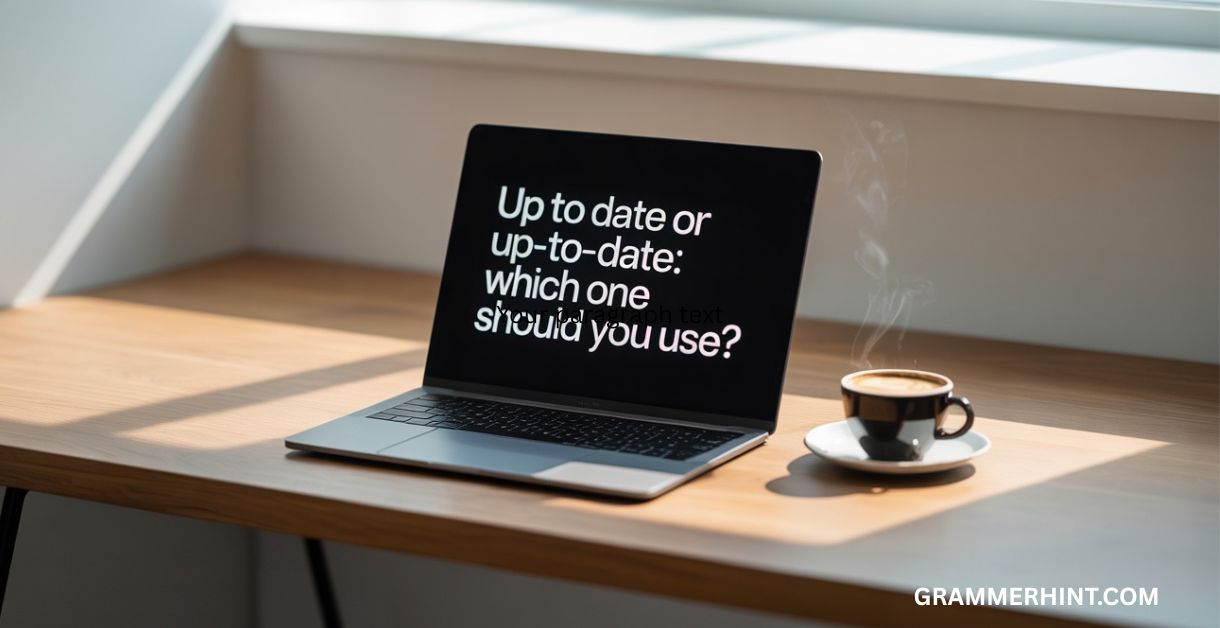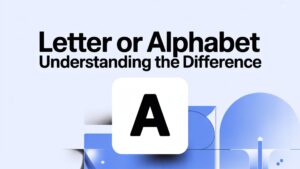You’ve probably stumbled over this choice mid-sentence: Do I write “up to date” or “up-to-date”? It’s a common stumbling block in emails, reports, and even professional websites. The problem? These phrases seem interchangeable, but they aren’t.
Welcome to one of the most misunderstood corners of English usage a place where hyphenation confusion, grammar rules, and context-based writing collide. Whether you’re proofreading a blog, finalizing a business proposal, or just trying to sound right in a Slack message, clarity in sentence structure matters.
In this article, you’ll learn:
- The difference between adverbial and adjective phrases
- When and why hyphenation in English changes meaning
- How to use real-world usage examples to write with confidence
- What tools, tips, and rules can help improve your writing clarity
We’ll also dig into some writing tips, share modern communication skills, and highlight common writing errors that most people never notice.
The Core Question: Up to Date or Up-to-Date?
Let’s cut straight to the chase.
“Up to date” is an adverbial phrase. It describes how something is—for example, when you say, “This information is up to date,” you’re modifying the verb is. No hyphen needed.
“Up-to-date”, on the other hand, is an adjective phrase. It comes before a noun and describes it directly, like in “an up-to-date document.” That’s when the hyphen matters.
So the answer to “Is up to date hyphenated?” is: only when it’s used as an adjective.
Real Examples:
✔ Correct:
“I just checked. The records are up to date.” (No hyphen – adverbial phrase)
✔ Correct:
“She handed me an up-to-date inventory sheet.” (Hyphen – adjective phrase)
✘ Incorrect:
“The records are up-to-date.” (Unnecessary hyphen)
Knowing the difference between adverb vs adjective is crucial here—and that’s where functional grammar application comes into play.
Grammar Rules Explained
Let’s simplify it: An adverbial phrase modifies a verb, adjective, or other adverb. It usually comes after the verb in a sentence. Meanwhile, an adjective phrase modifies a noun and comes before it.
This is the heart of the “up to date vs up-to-date” debate.
Example in Formal Writing:
“Our bookkeeping software keeps your finances up to date.”
Now change the structure:
“We offer up-to-date bookkeeping solutions.”
Notice the shift? The same concept—updated content—requires different punctuation depending on sentence position and role.
These hyphenation rules don’t exist to make life hard. They exist to ensure precision in writing. Otherwise, you end up with grammatical ambiguity—something your readers won’t appreciate.
Hyphenation in English: Why It Matters
Hyphenation in English might seem like a detail, but it affects more than just aesthetics. It affects reader comprehension, SEO structure, and overall writing accuracy.
Consider these variations:
| Sentence | Hyphen Used | Correct? | Why? |
|---|---|---|---|
| “Make sure the article is up-to-date.” | Yes | ✘ | Misused hyphen; should be “up to date” |
| “We publish up-to-date articles weekly.” | Yes | ✔ | Adjective modifying noun |
| “The articles remain up to date.” | No | ✔ | Follows verb, so no hyphen needed |
Getting the hyphen rules in English right helps you avoid awkward phrasing and keeps your writing professional.
Usage in Digital Communication
Today, digital communication relies on fast responses, clear instructions, and minimal confusion. Whether you’re sending a quick Slack message, posting on LinkedIn, or updating a Notion doc, writing clarity and language precision matter more than ever.
Sample Email 1 – Formal Use of “Up-to-Date”:
Subject: Weekly Report: Up-to-Date Metrics
Hi Melissa,
Just a quick note to confirm that the metrics dashboard is fully up-to-date as of this morning. Let me know if you spot anything off.
Best,
Jason
Sample Email 2 – Informal Use of “Up to Date”:
Subject: Dashboard Status
Hey Dan,
Checked the dashboard—it’s up to date now. All set!
Cheers,
Allison
In both cases, the tone and structure dictate the correct form. But so does the noun modification: one modifies “metrics,” the other modifies the verb “is.”
Why Context-Based Writing Matters
A big part of choosing “up to date or up-to-date” lies in understanding context. Without it, your writing becomes harder to interpret.
Here’s how context determines clarity:
- Up to date: Use it when you’re describing a state or condition (e.g., “The plugin is up to date.”)
- Up-to-date: Use it when you’re directly modifying a noun (e.g., “Get the up-to-date plugin now.”)
Mixing them up might not kill your sentence, but it will weaken your message. And in professional writing, even slight missteps can affect trust and perception.
Coming Up Next:
In the next section, we’ll explore:
- How these rules apply to informal communication trends
- Tips for catching common writing errors
- The subtle but powerful effect of usage consistency









